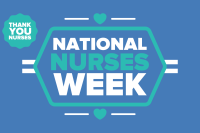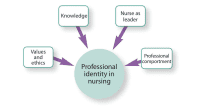October’s article “What works: Implementing an evidence-based nursing dress code to enhance professional image” (http://goo.gl/z0frxu) got me thinking about dress codes and how important this topic is to professionalism, public perception, and patient outcomes (such as satisfaction).
If you Google the term “staff nurse image,” the first pictures that pop up show a nurse wearing a white uniform or a white lab coat and blue scrubs. So despite the fact that white uniforms have been long gone from a nurse’s day-to-day wardrobe, why does the perception of a white uniform still persist?
A unified, professional style for nursing with a unique identity was the norm for decades. From the early 1900s until the 1970s, attire for the female centric profession was a white dress, cap, and hose. For many years, this uniform was linked to nursing, and strictly enforced dress codes ensured the standard didn’t change. However, when the style finally did change and pantsuits as well as colored scrubs became acceptable, public perception didn’t necessarily change with it. Today, nurses’ uniform color and designs reflect the dress code standards of the department or organization.
Public perception and professionalism: Is there a correlation?
Yes—not only does a correlation exist, but research over many years shows that behavior and dress strongly color our perceptions of an individual’s personality, competency, and commitment. Nurses’ professional image, including how we dress, can shape public perceptions of us, which can contribute to our success and potential future achievement.
So, if the evidence is clear that appearance is inseparable from our professional image, why are nursing dress codes so hard to develop and sustain? And why aren’t all nursing uniforms the same? With the shift to value-based healthcare and strong consumer preferences determining where patients go for care, the greater significance of this question is more important now than ever before.
Who’s the caregiver?
In today’s healthcare environment, it can be hard to identify a particular caregiver by role. Nurses, technicians, housekeeping staff—everyone dresses in scrubs. Studies have shed light on the difficulty that patients and families can have singling out registered nurses from other hospital staff. This confusion is a real problem when patients want to talk to a nurse about their care.
Many hospitals, home health agencies, and clinics have taken the dress code issue to heart and implemented uniform programs that help patients quickly identify an employee’s role by the color he or she is wearing. For example, in a given organization, all nurses might wear navy blue; nursing assistants, burgundy; and respiratory therapists, khaki. Some facilities even place a brochure in patients’ admissions packets and hang posters in patient rooms showing different staff functions and the colors they represent. Called “color by discipline,” this system it’s easy to understand. It helps patients determine who’s in charge of their care and who does what, so they’re more likely to ask questions and discuss what’s on their mind.
What’s next?
Research shows patients who are actively involved in their own care and communicate with their healthcare team have a safer, more satisfactory care experience—a goal we all want. I believe uniform dress codes help the patient and family with staff identification and instill confidence they’re being treated by an organized, professional team.
But an organization’s dress code goes only so far. How we personally use that dress code at work to represent ourselves is up to each one of us. How we dress reflects our personal approach to professionalism. (By the way, expect more emphasis on stricter dress codes as more research comes to light about infection rates and the consequences of home-laundered scrubs.)
Yes, dress codes matter. Read the research, understand the evidence, and embrace being the professional you are.



















2 Comments.
Your thinking makes a lot of sense
I work at a charter school and though we are not required to wear nursing gear, I have opted to wear nursing gear and as I explained to the CEO, students and staff have to spot the nurse when an emergency ensues. If I dressed in everyday wardrobe I would be mistaken as a student. As a professional nurse, I want to stand out in a crowd. A dress code does matter!!!